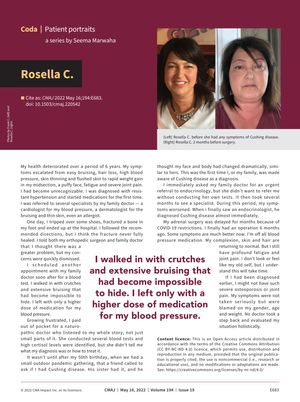TLDR Rosella C. believes an earlier diagnosis of Cushing disease could have prevented severe symptoms.
Rosella C. experienced a progressive decline in health over 6 years, with symptoms including hair loss, easy bruising, high blood pressure, skin thinning, weight gain, and severe joint pain. Despite seeing multiple specialists, her condition was not properly diagnosed until a friend suggested she might have Cushing disease. After insisting on further tests, she was eventually diagnosed with Cushing disease by an endocrinologist. Her adrenal surgery was delayed due to COVID-19, but post-surgery, some symptoms improved, though she still suffers from fatigue and joint pain. Rosella believes an earlier diagnosis could have prevented some of her severe symptoms and criticizes the medical professionals for not considering her condition holistically.
 July 2015 in “Cambridge University Press eBooks”
July 2015 in “Cambridge University Press eBooks” The document concludes that treatments for female hair loss and excess body hair are available, but managing expectations is important.
 81 citations
,
March 2009 in “Seminars in Cutaneous Medicine and Surgery”
81 citations
,
March 2009 in “Seminars in Cutaneous Medicine and Surgery” Effective hair loss treatment in women requires correct diagnosis and can include medications like minoxidil, antiandrogens, and treatments for underlying conditions like PCOS.
 11 citations
,
October 2003 in “Postgraduate Medical Journal”
11 citations
,
October 2003 in “Postgraduate Medical Journal” Doctors often diagnose Cushing's syndrome late, which worsens symptoms; earlier detection is needed.
 9 citations
,
January 1997 in “Gynecological Endocrinology”
9 citations
,
January 1997 in “Gynecological Endocrinology” The document concludes that treating androgen excess needs patience, managing expectations is important, and many drugs used are not officially approved, suggesting cosmetic options for mild cases.
 151 citations
,
August 2010 in “British Journal of Dermatology”
151 citations
,
August 2010 in “British Journal of Dermatology” Guidelines for diagnosing common hair loss include detailed history, clinical examination, and various diagnostic techniques.





